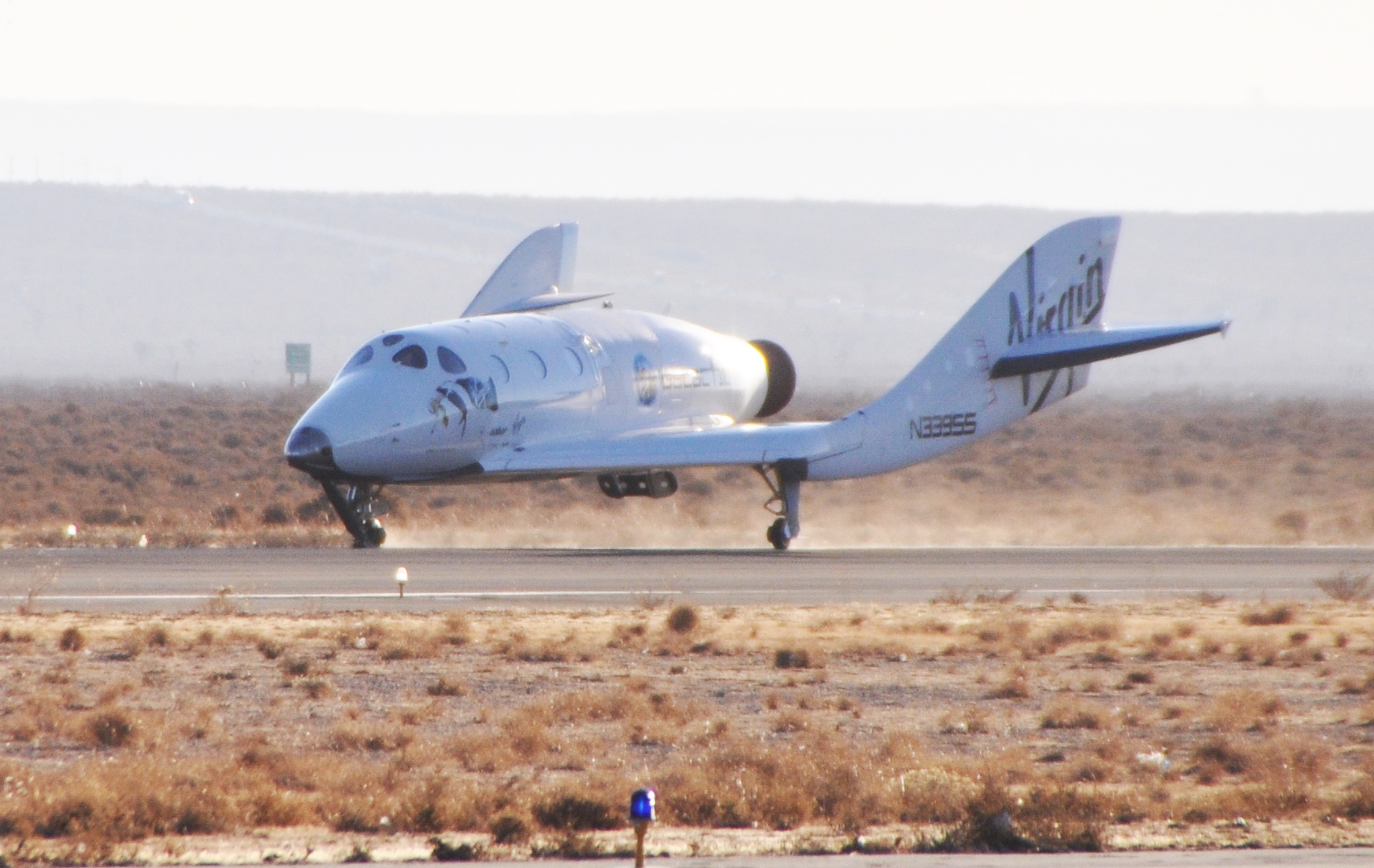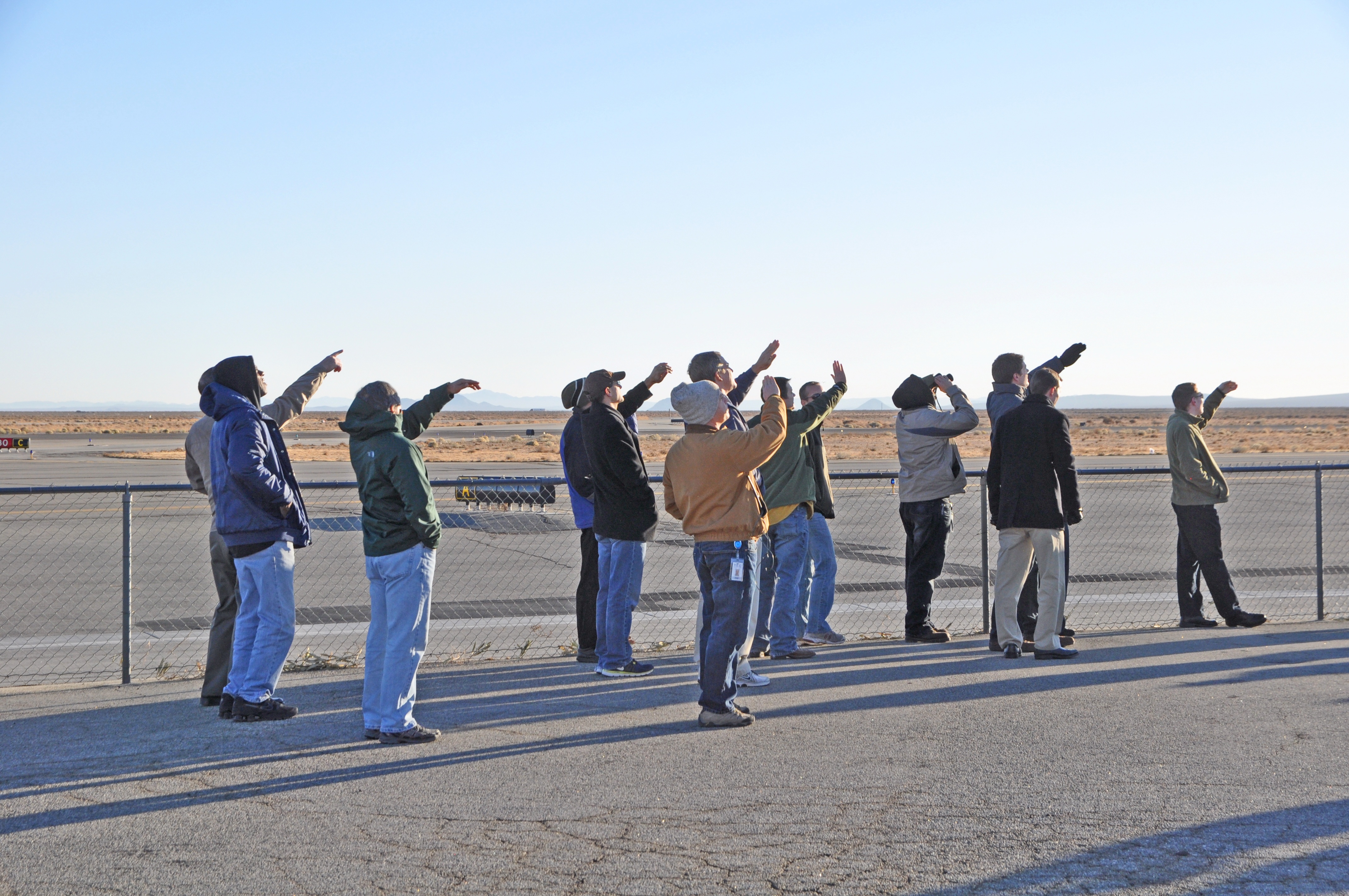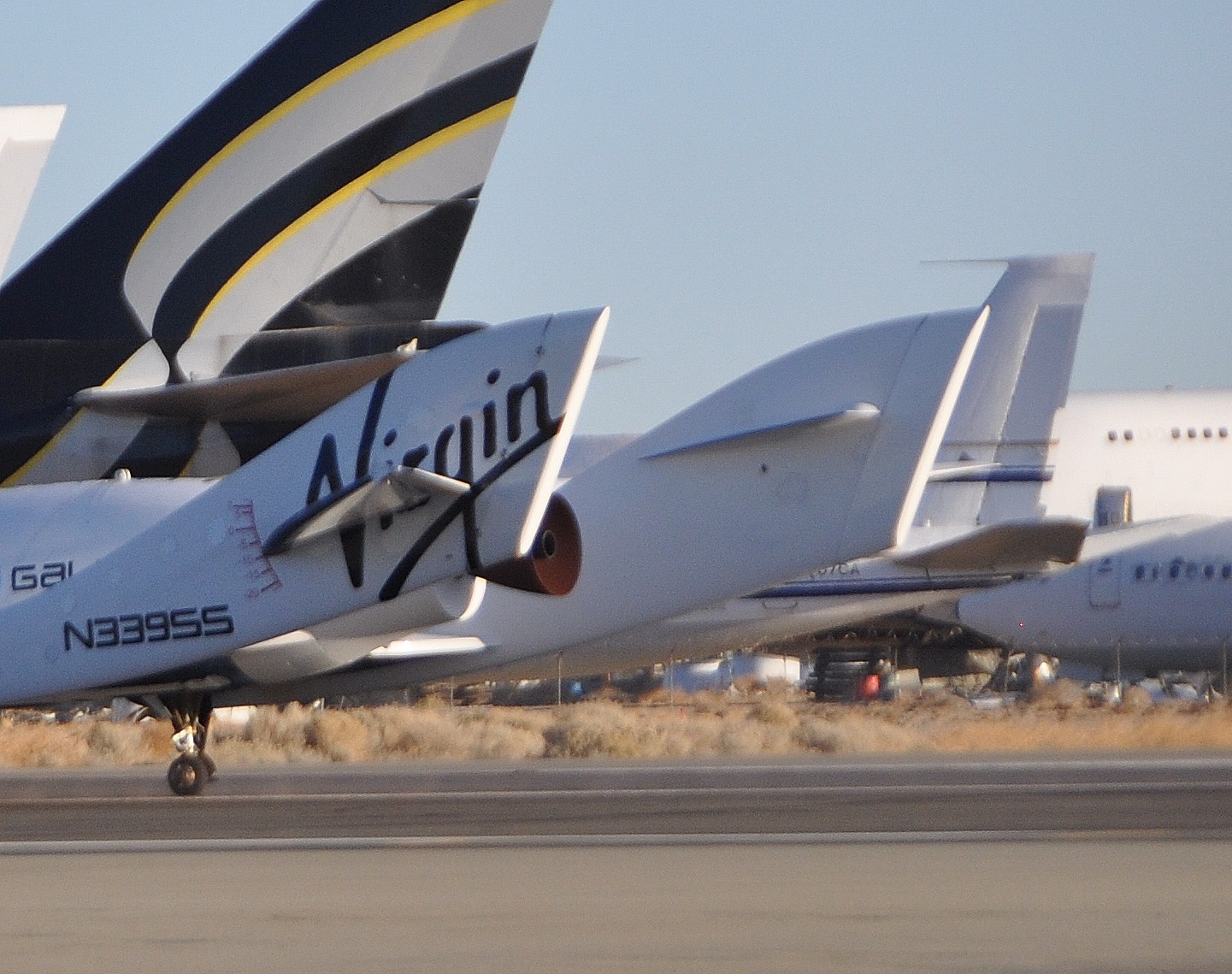Virgin Galactic's SpaceShipTwo Passes Key Flight Test


The Virgin Galactic suborbital SpaceShipTwo has completed a key flight test at the Mojave Air and Space Port in California — an on-the-fly appraisal that serves as an important precursor to upcoming hot-engine flights using its hybrid rocket motor.
After a high-altitude release from the WhiteKnightTwo mothership, SpaceShipTwo was piloted to a smooth runway touchdown Wednesday (Dec. 19), scoring a successful test drop and checking off a number of milestones.
"Today was a big step closer to first powered flight," said George Whitesides, CEO and president of Virgin Galactic, a spaceliner firm backed by British entrepreneur Richard Branson.
"We had a variety of systems newly installed on the vehicle," Whitesides told SPACE.com. "The most important were the components of the rocket system, including all the flight-ready tanks and valves. But we also flew with flight-ready thermal protection materials on the leading edges of the vehicle for the first time," he said.
More work to do
Whitesides said that the flight team and Virgin Galactic were pleased to see that the vehicle, under the steady hand of pilot Mark Stucky, retained its excellent flight characteristics.
"We still have a bit more work to do before we will be ready to ignite the rocket, including two more glide flights," Whitesides said. "2013 will be a big year," he said.
Breaking space news, the latest updates on rocket launches, skywatching events and more!
According to veteran Mojave Air and Space Port tarmac watcher Bill Deaver, SpaceShipTwo landed just before 8 a.m. PST under "crystal clear Mojave dawn skies," he told SPACE.com. "It looked like they tried a new, long, high key pattern of one circuit around the field rather than the former, shorter circuit on landing."
SpaceShipTwo is a hybrid motor-powered vehicle designed to fly six passengers and two pilots to the edge of space, without making a full orbit of Earth. Commercial operations of the craft will eventually be carried out at New Mexico's Spaceport America.
The price per seat for a SpaceShipTwo space traveler is $200,000 — so there's still time to start saving your money!
Leonard David has been reporting on the space industry for more than five decades. He is past editor-in-chief of the National Space Society's Ad Astra and Space World magazines and has written for SPACE.com since 1999.

Leonard David is an award-winning space journalist who has been reporting on space activities for more than 50 years. Currently writing as Space.com's Space Insider Columnist among his other projects, Leonard has authored numerous books on space exploration, Mars missions and more, with his latest being "Moon Rush: The New Space Race" published in 2019 by National Geographic. He also wrote "Mars: Our Future on the Red Planet" released in 2016 by National Geographic. Leonard has served as a correspondent for SpaceNews, Scientific American and Aerospace America for the AIAA. He has received many awards, including the first Ordway Award for Sustained Excellence in Spaceflight History in 2015 at the AAS Wernher von Braun Memorial Symposium. You can find out Leonard's latest project at his website and on Twitter.



